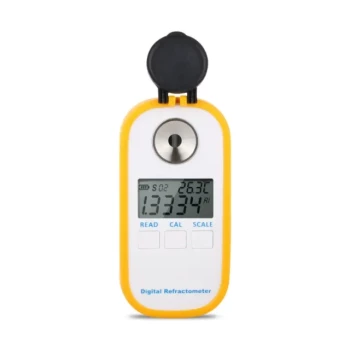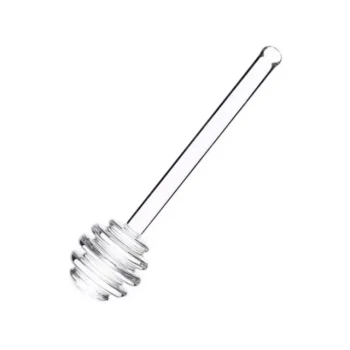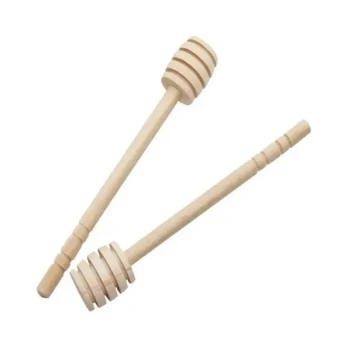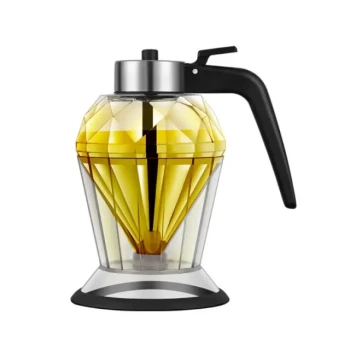The water content of honey is determined by a combination of the original nectar source, environmental conditions like humidity, and the beekeeper's management practices, particularly harvest timing and storage. These factors are critical because a high moisture level, typically above 19%, allows yeast to ferment the honey, which spoils its flavor, aroma, and quality.
While honey's water content is influenced by factors outside of a beekeeper's control, the most critical stages—harvest timing and post-harvest handling—are where quality is either preserved or lost. The goal is to keep moisture below 18% to prevent fermentation and guarantee shelf stability.
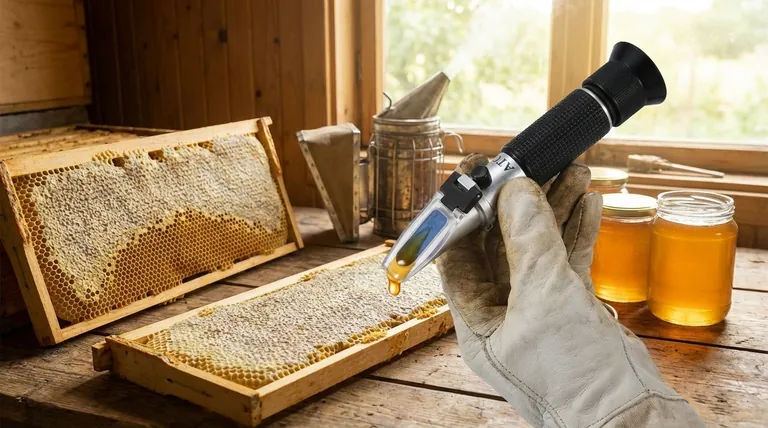
The Environmental Starting Point
The journey to stable honey begins with factors that are largely out of the beekeeper's control. These set the initial conditions for the moisture content the bees must manage.
Nectar Origin and Climate
Different plant nectars naturally have different water concentrations. The bees' first job is to reduce this initial moisture.
Ambient humidity and weather also play a significant role. In humid climates or during prolonged wet seasons, it is much harder for bees to dehydrate the nectar effectively.
In-Hive Management: The Ripening Process
Once nectar is in the hive, the bees begin the active process of turning it into honey. This "ripening" is almost entirely about moisture reduction.
The Dehydration Process
Bees add enzymes to the nectar and then actively dehydrate it. They do this by passing it from bee to bee and by fanning their wings over the open cells to create airflow, which evaporates excess water.
The Significance of Capping
When the honey has reached the optimal water content (typically below 18%), the bees seal the honeycomb cell with a wax cap. This capping is a clear signal that the honey is "ripe" and stable for long-term storage.
The Error of Premature Harvesting
Harvesting honey before it is fully capped is the most common cause of high water content. This "unripe" honey has not been sufficiently dehydrated by the bees and is at high risk of spoiling.
Understanding the Fermentation Thresholds
The percentage of water in honey is not just a number; it directly corresponds to its risk of spoilage. Understanding these thresholds is essential for quality control.
The Safe Zone: Below 18%
Honey with a water content of 17% or less will not ferment, regardless of its yeast content. This is the gold standard for long-term stability.
The Risk Zone: 18-19%
In this range, fermentation becomes possible if a significant yeast population is present. This honey is considered less stable and may spoil over time.
The Danger Zone: Above 19%
Once moisture content exceeds 19%, fermentation is likely. Above 20%, it is nearly inevitable and can happen rapidly, ruining the entire batch.
Post-Harvest Handling: Protecting Your Work
Even perfectly ripe honey can be compromised after it leaves the hive. Proper handling is the final, critical step.
The Hygroscopic Nature of Honey
Honey is hygroscopic, meaning it will absorb moisture directly from the air. Storing uncapped frames or extracted honey in a humid environment will cause its water content to rise.
Contamination During Extraction
Care must be taken during the extraction process to ensure no water is introduced. Wet equipment or cleaning residue can easily increase the final moisture percentage of the honey, putting it at risk.
Making the Right Choice for Your Goal
Your approach should be guided by your specific conditions and desired level of quality assurance.
- If your primary focus is maximum stability: Harvest only fully capped frames to ensure the honey is ripe and aim for a final water content of 17% or less.
- If you are working in a humid climate: Pay extra attention to post-harvest handling. Extract honey in a low-humidity environment and move it into airtight containers immediately.
- If you suspect high moisture content: Use a honey refractometer to get a precise measurement. This allows you to identify and isolate at-risk batches before they spoil.
Ultimately, managing honey's water content is about respecting the natural process and protecting the final product through careful timing and handling.
Summary Table:
| Factor | Impact on Water Content | Key Takeaway |
|---|---|---|
| Nectar Source & Climate | Sets initial moisture level; harder to reduce in high humidity. | Humid climates require extra care. |
| Harvest Timing (Capping) | Most critical control point; premature harvest = high moisture. | Harvest only fully capped frames. |
| Post-Harvest Handling | Hygroscopic honey absorbs air moisture; wet equipment adds water. | Store in airtight containers immediately. |
| Fermentation Threshold | <18% = Safe; 18-19% = Risk; >19% = Spoilage likely. | Use a refractometer to test batches. |
Achieve consistently stable honey with professional-grade equipment from HONESTBEE.
For commercial apiaries and distributors, proper moisture management is non-negotiable for protecting your product quality and brand reputation. HONESTBEE supplies the durable, wholesale-focused beekeeping supplies and equipment—including honey refractometers and storage solutions—you need to accurately monitor water content and prevent fermentation losses.
Let's protect your harvest. Contact our team today to discuss your commercial equipment needs.
Visual Guide
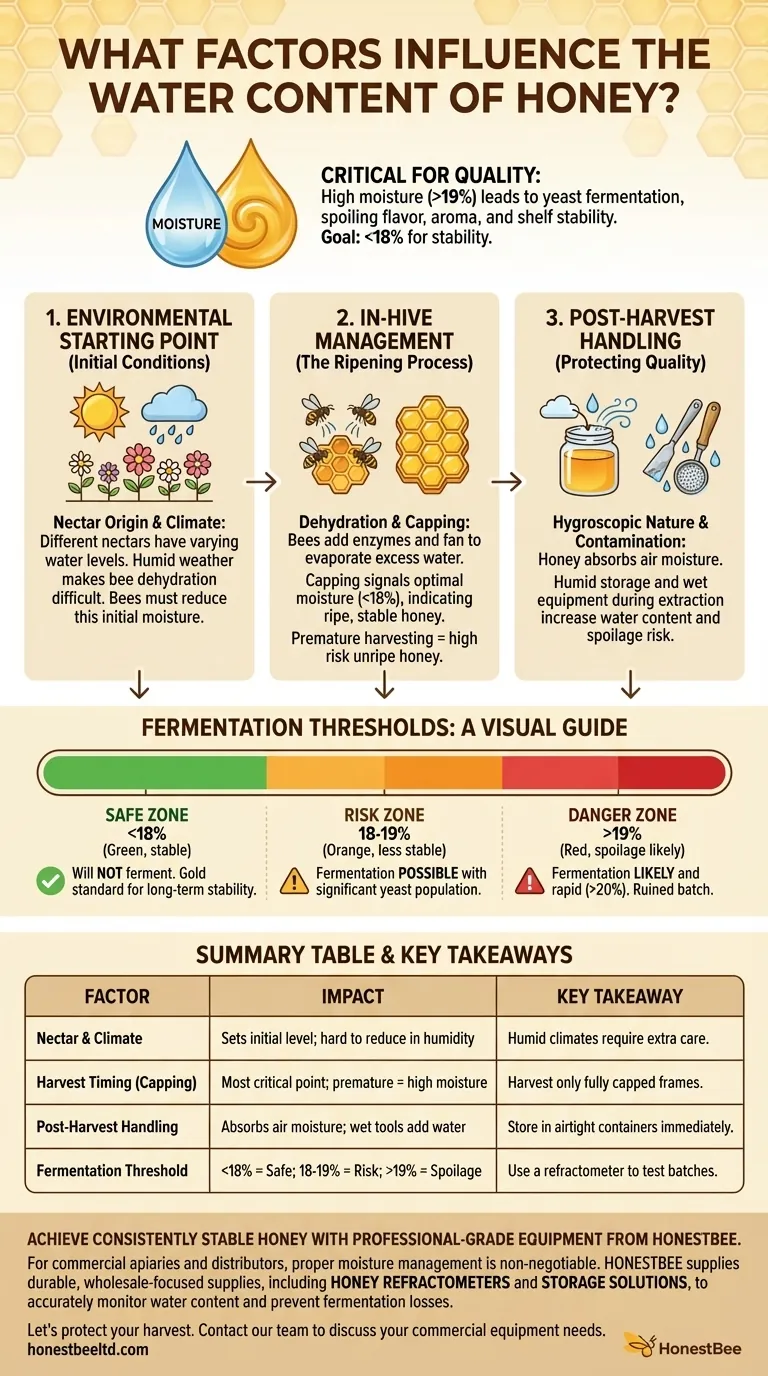
Related Products
- Precision Honey Refractometer Instrument for Quality Assessment
- Digital Honey Refractometer for Precision Measurement of Optimal Honey Quality
- Premium Heat-Resistant Glass Honey Dipper
- Natural Wood Honey Dipper for Tea Coffee and Desserts
- Modern Honeycomb Pattern Wooden Honey Dipper for Stirring and Drizzling
People Also Ask
- Why is a honey refractometer important for beekeepers? Ensure Quality and Prevent Fermentation
- What is a honey refractometer and what is its purpose? Ensure Honey Quality and Prevent Spoilage
- Why is a honey refractometer essential for honey harvesting? Protect Your Harvest from Spoilage
- What are the features of the Standard Refractometer for honey moisture content? Essential Tools for Quality Control
- What are the key points for proper usage of a honey refractometer? Ensure Accurate Moisture Readings Every Time

